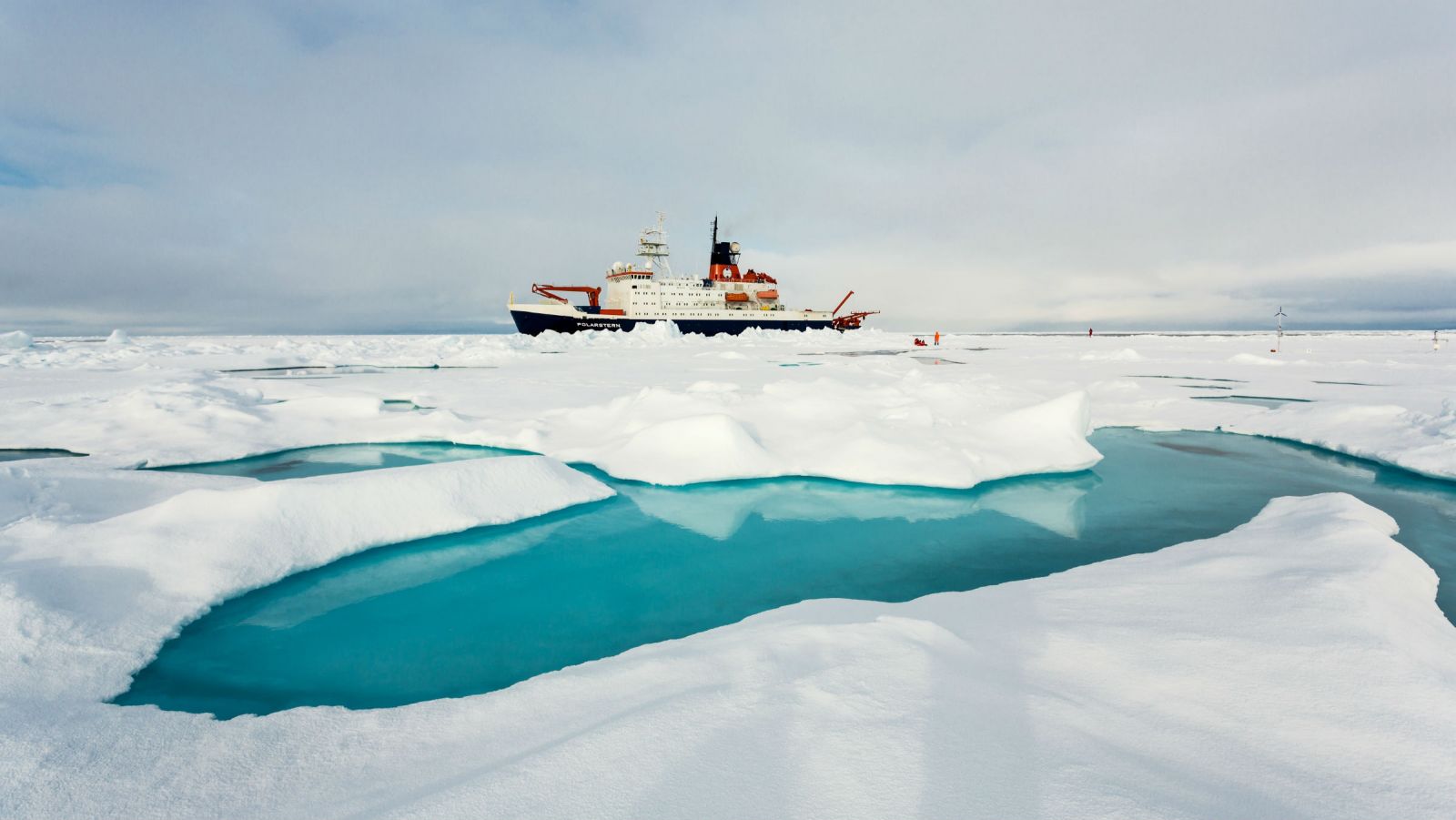Polarstern Sets Sail for Svalbard

On Wednesday, May 24, 49 atmospheric and sea-ice researchers will embark on an expedition headed for Svalbard, north of Norway, on board the research vessel Polarstern.
The researchers, from the Alfred Wegener Institute, Helmholtz Centre for Polar and Marine Research, are examining how the climate is changing in the Arctic.
The icebreaker will go alongside an ice floe, where the atmospheric researchers will spend two weeks continuously measuring how the energy balance on the surface varies with changing cloud cover. By doing so, they hope to address open questions concerning the feedback mechanisms between sea ice, clouds, and particles in the air, which contribute to the warming of the Arctic.
“Our hypothesis is that the low-hanging clouds typically found in the Arctic are to a large part responsible for the fact that, over the past few decades, the region has warmed at more than twice the speed of the rest of the planet. This phenomenon is commonly referred to as ‘Arctic amplification’ and hasn’t yet been reflected in global climate models, because we still don’t sufficiently understand the mechanisms involved,” says Professor Andreas Macke from the Leibniz Institute for Tropospheric Research, who will serve as Chief Scientist for the first leg of the expedition.
Atmospheric measurements taken on board Polarstern will be supplemented by a weather balloon tethered to the ice floe, the flights of the AWI research aircraft Polar 5 and Polar 6, and parallel measurements taken at the AWIPEV Station in Ny-Ålesund, so as to arrive at as complete a picture of atmospheric processes in the Arctic.
As Polarstern drifts alongside the floe, the scientists on board will also gather a broad range of biological, biogeochemical and sea-ice-physical measurements. One focus of this early-summer expedition is on the living conditions at the beginning of the melting period, when the space between the floes fills with open water, which, given its darker color, absorbs more energy than the surrounding ice.
As a result, more light makes its way beneath the surface, offering a source of energy for single-cell algae in the water. These phytoplankton form the basis of the Arctic food web, as they are fed on by zooplankton, which are in turn a food source for predatory animals like birds, seals and polar bears.
The expedition will end in Tromsø, Norway, in mid-July. Then, in the fall of 2019, the 400-foot icebreaker will sail to 84 degrees N 120 degrees E, in the East Siberian Sea, with the intention of getting icebound.
